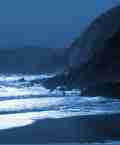 |

|
|||
Irish Canals NetworkTrail 2Canals Duration: Two weeks During the space of two weeks, you should be able to sample most of Ireland’s inland waterways, a truly rewarding experience. The three main inland waterways, the Grand Canal, the Royal Canal and the Shannon–Erne Waterway can be used by boat travellers. Other canal systems, especially the Newry Canal in the North and also the Ulster Canal, can only be experienced from the towpath. Another alternative is the River Barrow, not strictly speaking a canal, but whose navigation begins with a junction from the Grand Canal in Co. Kildare. The best place to start a tour of Ireland’s inland waterways is at the Waterways Centre at Ringsend in Dublin, just beside the start of the Grand Canal. This heritage centre will give you a good working knowledge of the history of Ireland’s inland waterways, complete with fascinating three-dimensional layouts, maps, photographs, artefacts and an audio-visual presentation. Further information on the inland waterways of Ireland can be obtained from Inland Waterways Ireland, a new all-Ireland body set up under the terms of the 1998 Belfast Agreement. The permanent headquarters will be in Enniskillen, with regional headquarters in Carrick-on-Shannon, Dublin and Scarriff, Co. Clare. In the period up to 2006, Waterways Ireland intends to oversee substantial further capital expenditure on the Grand Canal, the Royal Canal and the Barrow navigation. The Barrow Line offers an agreeable diversion. Turn off the Grand Canal in Co. Kildare. The first few miles of the Barrow are canalised, then you are into open river. The landscapes are quite spectacular, with distant views of the Wicklow mountains as you sail downstream. Villages along the way that make pleasant stopping off points include Leighlinbridge, Co. Carlow, while the first sizeable town is New Ross. Continue on to Waterford and its harbour, which will bring you to the sea.
Royal Canal The original Ballinamore and Ballyconnell Canal had been opened in 1860 and closed in 1869, having been used by only eight boats. Work on its reconstruction began in 1991, cost over IR£30 million and was completed in 1994. Now the locks are electronically controlled. The canal itself is a joy to traverse, with such attractive villages along its route as Keshcarrigan and Ballinamore. Many tourist attractions have been developed along its route, so if you want to stop off along the way, there’s plenty to do. One useful publication is the Shannon–Erne Users Guide by Dick Warner. Survey work is under way to ascertain the feasibility of reconstructing the Ulster Canal, but if work does get under way, it’s likely to take several years to complete. If the Ulster Canal is reopened, it would mean being able to navigate from the Shannon at Limerick through the entire length of Ireland, through the Lower River Bann to reach the sea by Coleraine. On the Newry canal, just south of Portadown, you can visit Moneypenny’s Lock. It’s a restored lock keeper’s house, together with stables and bothy, 3 km (2 miles) south of Portadown. It gives a useful insight into the old ways of canal working. Also in the North, sections of the Newry Canal have been restored, including buildings, while the River Lagan presents a spectacular way into Belfast, culminating in the Lagan Lookout Centre. The centre explains the history of the weir on the river, as well as the river’s history, using high-tech computer and video technology. The towpath beside the River Lagan can be walked from Lisburn to Stranmillis, a distance of 16 km (10 miles). At the other end of the Shannon, much work is under way to reopen the Shannon to canal-type traffic from Limerick as far upstream as Killaloe. When this is completed, the Shannon will be entirely navigable as far as the Fermanagh lakes. Shannon–Erne Waterway, tel (078) 44855; fax (078) 44856; email shannonernepromo@eircom.net. Moneypenny’s Lock, near Portadown, Co. Armagh; tel (02838) 322205 (open weekends April–Sept). Lagan Lookout Centre, Donegall Quay, Belfast; tel (02890) 315444 (open daily April–Sept; Oct–March, Tues–Sun). Extracted from Ireland's Inland Waterways by Ruth Delany, published by Appletree Press:
More will follow: |
[ Back to top ]
All Material © 1999-2006 Irelandseye.com and contributors
